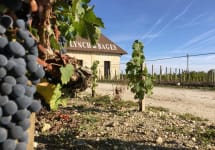Chateau Lynch-Bages 1990
-
Robert
Parker -
Wine
Spectator
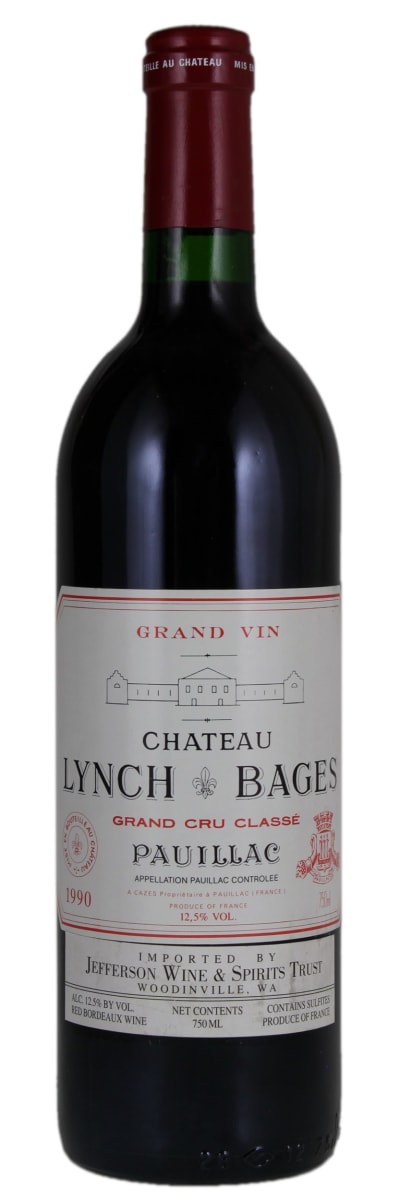


Product Details
Your Rating
Somm Note
Winemaker Notes
Today, the wine exhibits lovely bold cedar nose with good structure as it fills the palate with ripe, intense, juicy plums, cassis and spice. 1990 Lynch Bages juxtaposes power with elegance with a potential to age and develop further.
Professional Ratings
-
Robert Parker's Wine Advocate
This magnificent Lynch Bages has been drinking well since the day it was released and it continues to go from strength to strength. The biggest, richest, fullest-bodied Lynch Bages until the 2000, the fully mature 1990 exhibits an unbelievably explosive nose of black currants, cedarwood, herbs and spice. The majestic, classically Bordeaux aromatics are followed by a full-bodied, voluptuously textured, rich, intense wine with superb purity as well as thrilling levels of fruit, glycerin and sweetness. This beauty should continue to provide immense pleasure over the next 15+ years.
-
Wine Spectator
Aromas of tar, currant and berries follow through to a full-bodied palate, with silky tannins and a long, long finish. Still not completely ready, but so good anyway.
Other Vintages
2024-
James
Suckling - Vinous
-
James
Suckling - Vinous
-
Jeb
Dunnuck - Decanter
-
Robert
Parker
-
Wilfred
Wong -
Jeb
Dunnuck -
James
Suckling - Decanter
-
Wine
Spectator -
Robert
Parker
-
Wine
Enthusiast -
James
Suckling - Decanter
- Vinous
-
Wine
Spectator -
Jeb
Dunnuck -
Robert
Parker
-
James
Suckling -
Wine
Enthusiast -
Wilfred
Wong - Decanter
-
Jeb
Dunnuck -
Wine
Spectator -
Robert
Parker
-
Jeb
Dunnuck -
James
Suckling - Decanter
-
Wine
Spectator -
Robert
Parker
-
Jeb
Dunnuck -
James
Suckling -
Wine
Spectator -
Wine
Enthusiast -
Robert
Parker - Decanter
-
Wilfred
Wong
-
Wine
Enthusiast -
James
Suckling - Decanter
-
Jeb
Dunnuck -
Wine
Spectator -
Robert
Parker
-
Robert
Parker -
James
Suckling -
Wine
Spectator - Decanter
-
Jeb
Dunnuck -
Wine
Enthusiast -
Connoisseurs'
Guide
-
Wine
Enthusiast -
James
Suckling -
Jeb
Dunnuck - Decanter
-
Wine
Spectator -
Wilfred
Wong -
Robert
Parker
-
James
Suckling -
Robert
Parker - Decanter
-
Wine
Enthusiast -
Wine
Spectator -
Jeb
Dunnuck
-
Wine
Enthusiast -
James
Suckling -
Wine
Spectator -
Wilfred
Wong
-
Wine
Enthusiast -
James
Suckling -
Wine
Spectator -
Robert
Parker -
Wilfred
Wong - Decanter
-
James
Suckling -
Robert
Parker - Decanter
-
Wine
Spectator -
Wine
Enthusiast -
Wilfred
Wong
-
James
Suckling -
Robert
Parker -
Wine
Enthusiast -
Wine
Spectator - Decanter
-
Wine
Enthusiast -
Robert
Parker -
Connoisseurs'
Guide -
Wine
Spectator
-
Wine
Enthusiast -
Robert
Parker -
Wine
Spectator -
James
Suckling -
Connoisseurs'
Guide -
Wine &
Spirits
-
James
Suckling -
Wine
Enthusiast -
Wine &
Spirits -
Wine
Spectator -
Robert
Parker -
Connoisseurs'
Guide
-
Wine
Enthusiast -
Wine &
Spirits
-
Robert
Parker -
Wine
Enthusiast -
Wine
Spectator
-
Robert
Parker -
Wine
Spectator
-
Robert
Parker -
Wine
Spectator
-
Robert
Parker -
Jeb
Dunnuck -
Wine
Spectator -
James
Suckling -
Wine
Enthusiast -
Wine &
Spirits
-
Robert
Parker
-
Wine &
Spirits -
Wine
Spectator
-
Robert
Parker -
Wine
Spectator
-
Wine
Spectator
-
Robert
Parker -
Wine
Spectator -
James
Suckling
-
Wine
Spectator -
Robert
Parker
-
Robert
Parker -
Wine
Spectator
-
Wine
Spectator -
Robert
Parker
-
James
Suckling -
Robert
Parker -
Wine
Spectator

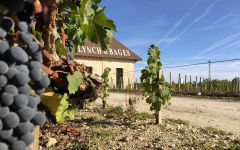
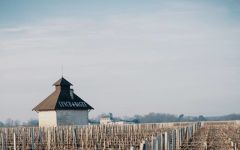
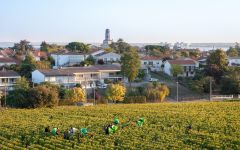
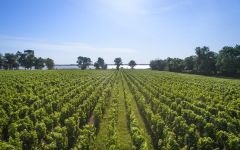
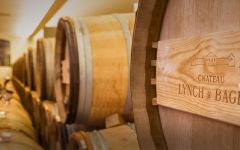

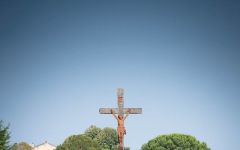
The grapes are all hand picked and then carefully sorted before crushing. A very strict selection is made prior to blending and the wine is traditionally aged in oak barrels before bottling.

One of the world’s most classic and popular styles of red wine, Bordeaux-inspired blends have spread from their homeland in France to nearly every corner of the New World. Typically based on either Cabernet Sauvignon or Merlot and supported by Cabernet Franc, Malbec and Petit Verdot, the best of these are densely hued, fragrant, full of fruit and boast a structure that begs for cellar time. Somm Secret—Blends from Bordeaux are generally earthier compared to those from the New World, which tend to be fruit-dominant.

The leader on the Left Bank in number of first growth classified producers within its boundaries, Pauillac has more than any of the other appellations, at three of the five. Chateau Lafite Rothschild and Mouton Rothschild border St. Estephe on its northern end and Chateau Latour is at Pauillac’s southern end, bordering St. Julien.
While the first growths are certainly some of the better producers of the Left Bank, today they often compete with some of the “lower ranked” producers (second, third, fourth, fifth growth) in quality and value. The Left Bank of Bordeaux subscribes to an arguably outdated method of classification that goes back to 1855. The finest chateaux in that year were judged on the basis of reputation and trading price; changes in rank since then have been miniscule at best. Today producers such as Chateau Pontet-Canet, Chateau Grand Puy-Lacoste, Chateau Lynch-Bages, among others (all fifth growth) offer some of the most outstanding wines in all of Bordeaux.
Defining characteristics of fine wines from Pauillac (i.e. Cabernet-based Bordeaux Blends) include inky and juicy blackcurrant, cedar or cigar box and plush or chalky tannins.
Layers of gravel in the Pauillac region are key to its wines’ character and quality. The layers offer excellent drainage in the relatively flat topography of the region allowing water to run off into “jalles” or streams, which subsequently flow off into the Gironde.
